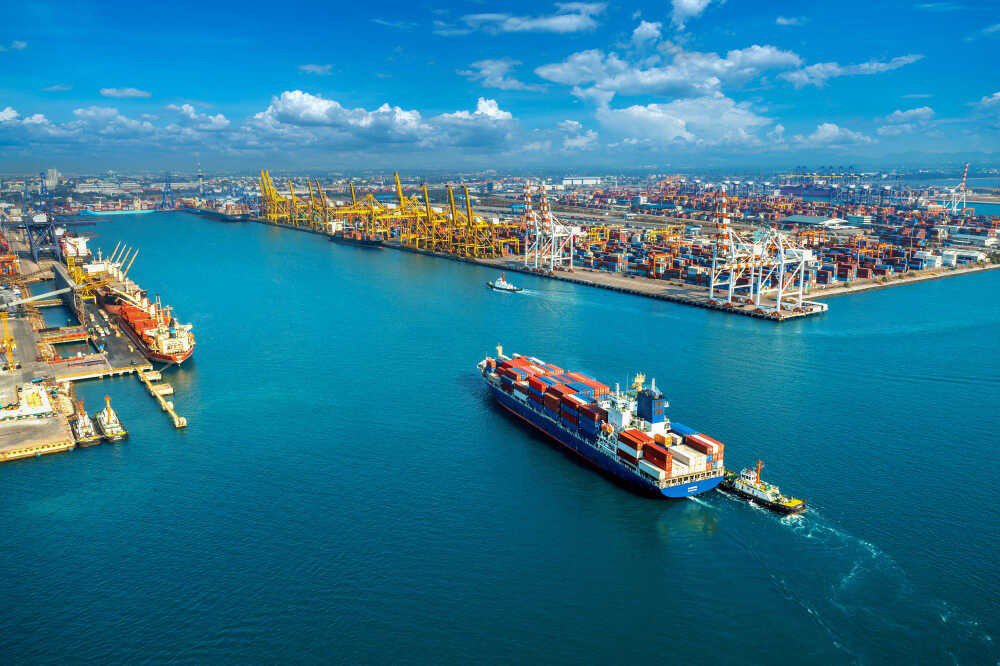
Ocean freight shipping is a crucial aspect of international trade, and it plays a vital role in the global economy. As an import export business, understanding the do's and don'ts of ocean freight shipping can help you to ensure the success of your shipments. Sea cargo services involve transporting goods via ships across the ocean, and it can be a complex and challenging process, especially for those who are new to it. Therefore, it is essential to be aware of the key do's and don'ts to avoid any potential problems that may arise during the shipping process. A CBM Calculator can help you accurately determine the volume of your cargo, ensuring that you choose the right shipping method and avoid unnecessary costs.
In this article, we will discuss the most important do's and don'ts of ocean freight shipping as an exporter or importer, so that you can ensure the safe, timely, and cost-effective delivery of your goods to their destination.
Here is a table summarizing some important do's and don'ts of ocean freight shipping as an exporter or importer:
|
Do's |
Don'ts |
|
Plan ahead and consider transit time and schedule |
Skimp on packaging |
|
Choose the right carrier with experience |
Make assumptions |
|
Properly package your goods for safe transport |
Overlook customs regulations |
|
Obtain necessary permits, licenses, and documents |
Neglect sea freight insurance |
|
Communicate regularly with your freight forwarder |
Neglect tracking and monitoring |
|
Consider container size and type |
Wait until the last minute to book your shipment |
|
Be aware of weight and volume restrictions |
Misrepresent your shipment |
|
Know and comply with environmental regulations |
Rely solely on one carrier for all your shipments |
|
Utilize technology for tracking and communication |
Ignore weather or geopolitical risks |
The Do's of Ocean Freight Shipping for exporters
Plan ahead and consider transit time and schedule: It behooves exporters to exercise foresight and contemplate the transit time and schedule whilst dispatching commodities via sea cargo services. Such sagacious planning and coordination with logistics associates mitigates the possibility of impediments and guarantees timely arrival of the consignment at its intended port of call.
Properly package your goods for safe transport
Proper packaging of goods is essential for safe and secure transport via ocean freight. This may include using sturdy containers and protective materials, as well as properly labeling and marking the shipment.
Obtain necessary permits, licenses, and documents
Depending on the origin and destination of the shipment, exporters may need to obtain various permits, licenses, and documents to comply with local regulations. This may include export licenses, certificates of origin, and bills of lading.
Communicate regularly with your freight forwarder
Regular communication with your freight forwarder can help ensure that the shipment is progressing smoothly and any issues are addressed in a timely manner. This can help minimize risks and ensure that the goods are delivered on time.
Consider container size and type
Exporters should consider the size and type of container when shipping goods via sea cargo services. Choosing the right container can help reduce costs and minimize damage to the goods during transport.
Be aware of weight and volume restrictions
Ocean carriers often have weight and volume restrictions for each shipment, and exceeding these limits can result in additional charges or delays. It is important for exporters to accurately measure and declare the weight and volume of the goods to avoid any issues.
Know and comply with environmental regulations
Exporters should be aware of and comply with environmental regulations when shipping goods via ocean freight. This includes restrictions on the use of certain materials or packaging, as well as limitations on emissions or discharge.
The Do’s of Ocean Freight Shipping for Importers
Choose the right carrier with experience
Importers should choose a carrier with experience in the specific trade lane and destination country. This can help ensure that the shipment is handled properly and any issues are addressed quickly and efficiently.
Skimp on packaging
Just like exporters, importers should also ensure that the goods are properly packaged for safe transport. This includes using sturdy containers and protective materials, as well as properly labeling and marking the shipment.
Overlook customs regulations
Importers should be aware of and comply with customs regulations in the destination country. This includes properly declaring the contents and value of the shipment, as well as obtaining any necessary permits or licenses.
Neglect insurance
Import export business should consider obtaining sea freight insurance to protect against any loss or damage that may occur during transport. This can provide peace of mind and help minimize the financial impact of any unforeseen issues.
Neglect tracking and monitoring
Regularly tracking and monitoring the shipment can help importers stay informed of the status and location of the goods. This can help ensure that any issues are addressed promptly and minimize the risk of delays.
Wait until the last minute to book your shipment
Importers should book their shipment as early as possible to ensure that the goods are transported on time. Waiting until the last minute can result in limited availability of carriers and higher costs.
Misrepresent your shipment
Importers should accurately declare the contents and value of the shipment to avoid any customs issues or delays. Misrepresenting the shipment can result in fines or even legal action.
The Don’ts of Ocean Freight Shipping
Don't skimp on packaging
Exporters should never skimp on packaging as this can result in damage to the goods during transport. Using sturdy containers and protective materials can help ensure that the goods arrive at their destination in good condition.
Don't overlook customs regulations
Exporters should always comply with customs regulations in the destination country. This includes obtaining any necessary permits or licenses and properly declaring the contents and value of the shipment.
Don't forget to obtain insurance
Exporters should consider obtaining sea freight insurance to protect against any loss or damage that may occur during transport. Neglecting to obtain insurance can result in financial losses in case of unforeseen issues.
Don't ignore environmental regulations
Exporters should be aware of and comply with environmental regulations when shipping goods via ocean freight. This includes restrictions on the use of certain materials or packaging, as well as limitations on emissions or discharge.
Don't exceed weight and volume restrictions
Ocean carriers often have weight and volume restrictions for each shipment, and exceeding these limits can result in additional charges or delays. Accurately measuring and declaring the weight and volume of the goods is important to avoid any issues.
Don't ignore transit times and schedules
Planning ahead and considering transit times and schedules is important for exporters to ensure that the goods arrive at their destination on time. Neglecting to do so can result in delays and additional costs.
Don't underestimate the importance of communication
Regular communication with logistics partners can help ensure that the shipment is progressing smoothly and any issues are addressed in a timely manner. This can help minimize risks and ensure that the goods are delivered on time.
The Don'ts of ocean freight shipping for importers
Don't choose a carrier solely based on cost
Importers should not choose a carrier solely based on cost as this can result in subpar service and potential delays. It's important to consider other factors such as experience, reliability, and reputation.
Don't neglect customs regulations
Importers should always comply with customs regulations in the destination country. This includes properly declaring the contents and value of the shipment and obtaining any necessary permits or licenses.
Don't overlook insurance
Importers should consider obtaining insurance to protect against any loss or damage that may occur during transport. Neglecting to obtain insurance can result in financial losses in case of unforeseen issues.
Don't ignore tracking and monitoring
Regularly tracking and monitoring the shipment can help importers stay informed of the status and location of the goods. Neglecting to do so can result in delays and potential loss of goods.
Don't make assumptions about transit times and schedules
Importers should not make assumptions about transit times and schedules. It's important to consider the estimated time of arrival and plan accordingly to avoid potential delays.
Don't ignore packaging requirements
Importers should be aware of and comply with packaging requirements to ensure that the goods are properly protected during transport. Neglecting packaging requirements can result in damage to the goods.
Don't neglect communication with logistics partners
Regular communication with logistics partners can help ensure that the shipment is progressing smoothly and any issues are addressed in a timely manner. This can help minimize risks and ensure that the goods are delivered on time.
Conclusion
Ocean freight shipping is an essential mode of transport for international trade, and it is vital for exporters and importers to understand the do’s and don’ts of ocean freight shipping to ensure the success of their shipments. By planning ahead, choosing the right carrier, properly packaging your goods, obtaining proper documentation, communicating with your freight forwarder, and following best practices throughout the shipping process, you can ensure that your ocean freight shipment arrives safely, efficiently, and on time. Remember to always prioritize safety and compliance to protect your investment and ensure a successful shipment.





 Get instant quote
and compare offers in real time
Get instant quote
and compare offers in real time